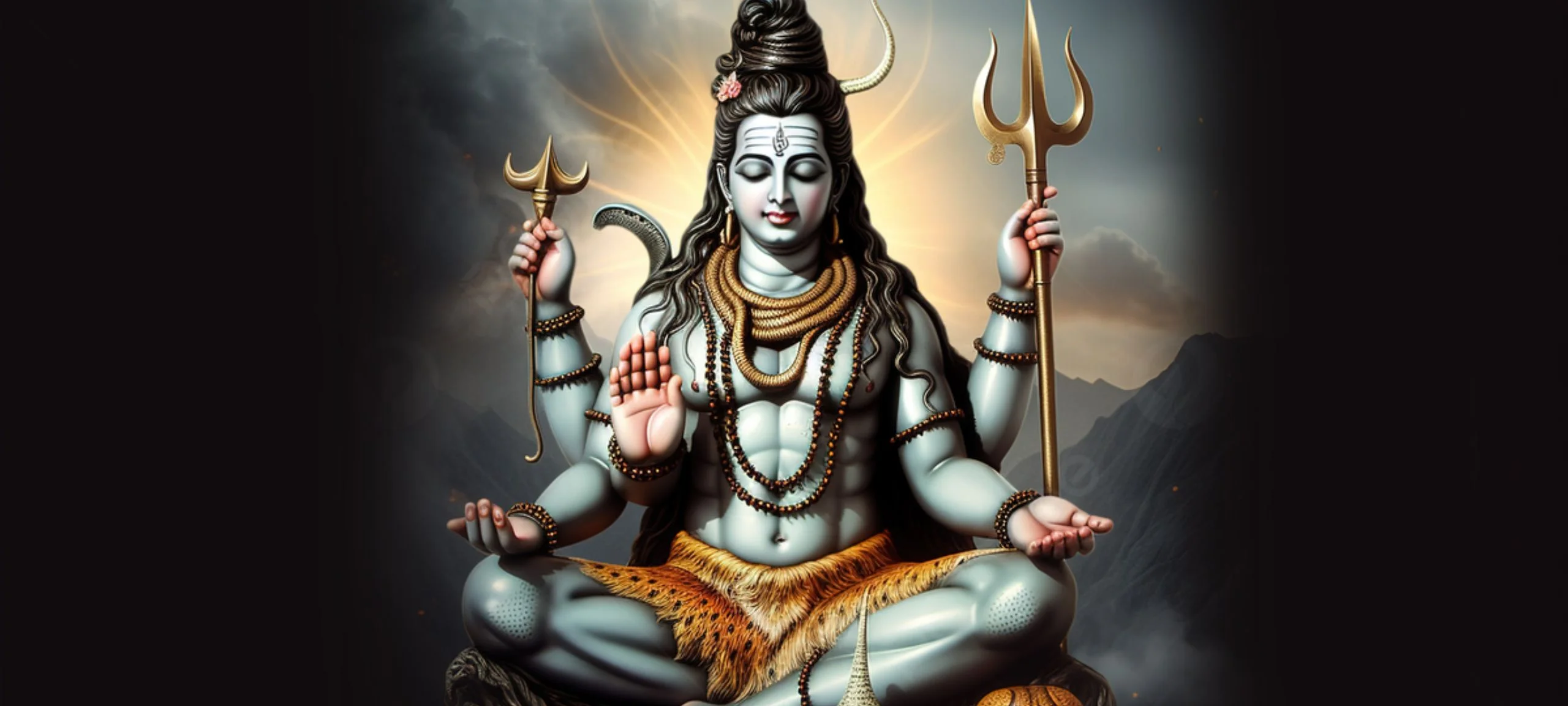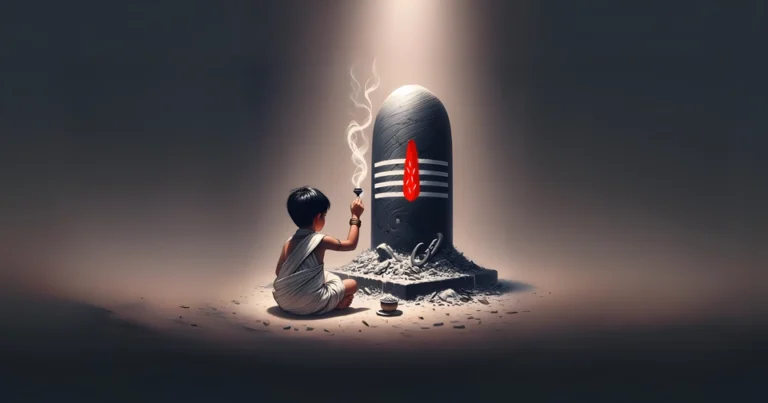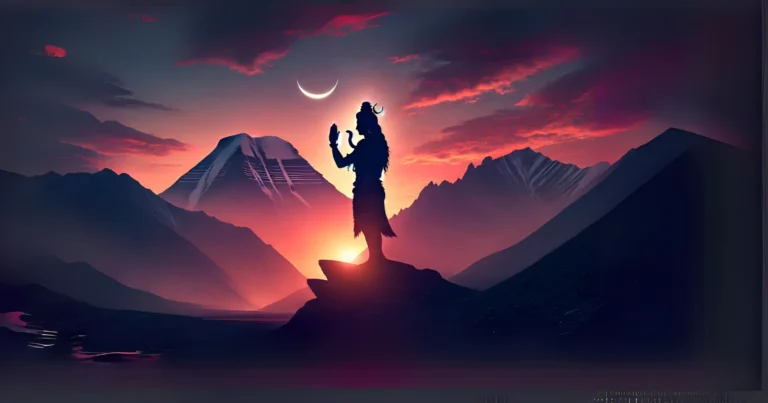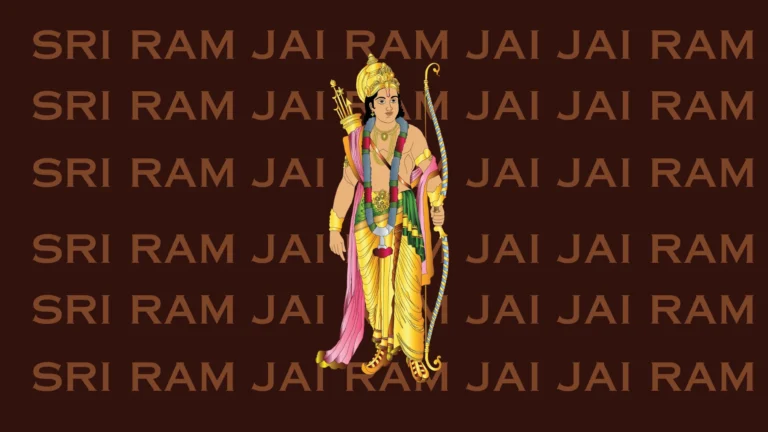Please Like the Blog and Share it for Maximum Reach
Table of Contents
The Various Sampradayas
We see all age groups observing Shivaratri. Indeed, young-old, man-woman, all actively participate and fill the air with divine chants. Many others fast in particular while others stay awake all-night. Sanatana dharma is divided into five traditions namely Saura, Ganapatya, Shaiva, Vaishnava and Shakta.
Evidently, each sampradaya reveres their respective deity, refuting other gods. However Shivratri is the only day when all come together discarding personal biases. Thus, all attain material and spiritual well-being.
How did Shivaratri start?
In the 15th chapter of the Shiva purana, Nandikeshwara tells the Sanat Kumaras-
O Kumara Brothers! Long ago, Lord Vishnu lay blissfully on his bed. Suddenly Lord Brahma stomped in furiously- “Oh Vishnu! How dare you sleep like this on my arrival. I am your master. Hence out of mercy I am meeting you.’
On hearing Brahma’s claims, Vishnu said- “Oh sage! You are my son. So, do not speak like this. Cool down.”
Brahma retorted- “Oh Vishnu! How am I your son? It is not right to mislead yourself. Are you not aware of my names- Svayambhu, Aja, Parameshti, Vidhata, and Brahma?” I am your father. There is no one in the three worlds who has created me.”
Lord Vishnu replied-
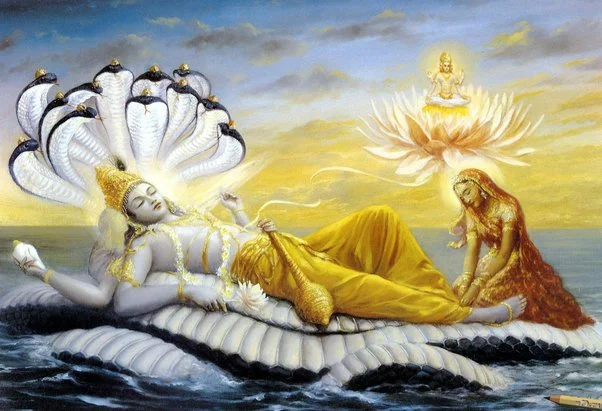
“Oh son! You have appeared from my own navel. Nevertheless, under Maya’s hold, you speak thus.” “Oh Sanatkumaras, likewise, Brahma-Vishnu debated for a long while.”
Finally, both waged a war. Eventually, the great lord Mahadev appeared in their midst as a gigantic jyotirlinga. On seeing the effulgence, Brahma and Vishnu stopped fighting. Soon, they came up with a ploy-
“Whoever finds the beginning or end of this enormous pillar shall win the debate.” Thereafter, taking the form of a boar, Lord Vishnu plunged downwards while Brahma disguised as a swan disappeared into the skies. But, none could find the other end of the pillar.
So, Brahma resorted to deceit and brought ketaki flowers as a false witness. The ketaki flowers lied to lord vishnu about Brahma’s victory. Lord Vishnu on the other hand, truthfully admitted his defeat.
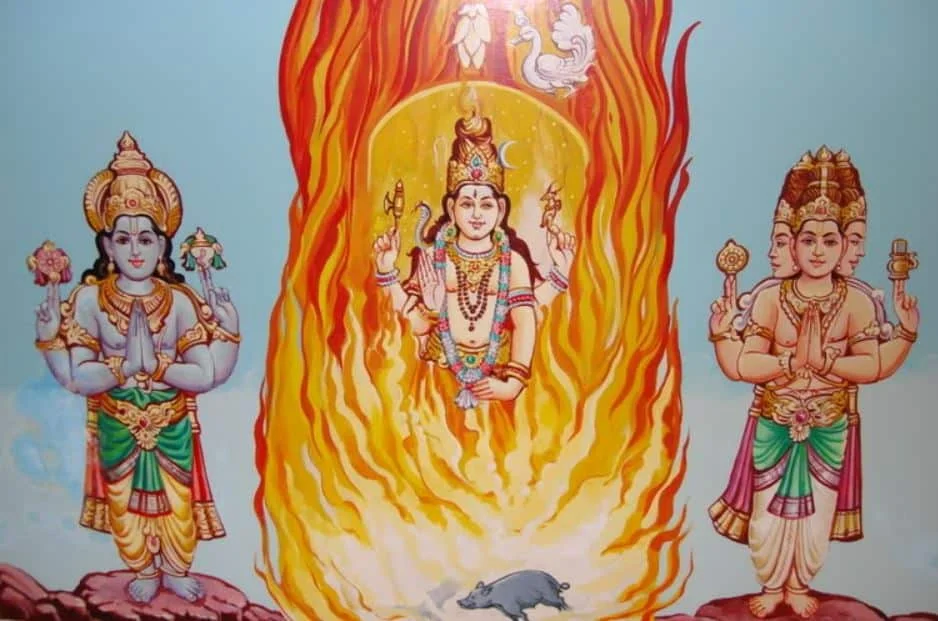
Shivaratri: Lord Shiva curses Brahma
Nandikeshwar continued-
“Oh Sanat kumaras, Lord Shiva was pleased by Vishnu’s truthful speech and equally enraged by Brahma’s lie. So, He appeared in person. On seeing Lord Shiva, Vishnu sang hymns of devotion. Pleased by Vishnu’s attitude, Lord Shiva said-
‘Oh Vishnu! I am highly pleased by your conduct. May you enjoy unparalleled fame like me.’ Then, Lord Shiva turned towards Brahma and spoke with rage-
“Oh sage, for popularity you forsook your intrinsic nature. You even lied to prove your point. Hence I deprive you of all worship.”
Grief-stuck Brahma fell at Lord Shiva’s feet. The lord’s heart melted and he said- “Oh sage! You shall govern the material laws and have your full share in that department.” Thus, after gratifying Brahma, Lord Shiva addressed the Ketaki flowers- “Oh Ketaki, You have behaved unjustly by giving false testimony. Hence, I reject your offerings.”
Nandi continued-
“Oh Sanat Kumaras, thereafter Brahma-Vishnu stood on both sides of Lord Sadashiva and glorified him along with their family.
The great Lord Shiva said- “Oh Brahma-Vishnu! You both are very dear to me. Today’s day is very auspicious. This dark lunar fortnight of Chaturdashi shall be universally acclaimed as Shivaratri.
Reciting the Shivasahasranama on Shivaratri has its own glories.
How to fast on Shivaratri?
In Maha Shiva purana’s 10th canto 2nd chapter, Lord Brahma describes the four subdivisions of Shivarati fast-
He spoke to Sage Narada as follows-
“Oh Narada! After finishing morning duties, one should happily go to the Shiva temple and sing the following hymn-

“Oh Lord Sadashiva! I am fasting for you. Kindly ensure no obstacle comes in my way.”
Likewise, after taking a sankalpa (resolve), the devotee should gather all the necessary paraphernalia for the Shodashopachara puja. Then, Spread a mat facing the north or west direction and place the pooja articles near a potent Shivalinga.
However, in the absence of a Shiva temple, make a Parthiva Shiva Linga of clay and worship him with all rules.
Afterwards, the devotee should wear costly garments and sit on the asana. Then he should either recite the glories of Shivaratri or devoutly hear it from a second person.
You must sincerely and nicely worship the reciter. After offering tasty delicacies to Lord Shiva, it is best to take Sankalpa (resolve) for all the four prahars and worship the Shivlinga. Conventionally, stay awake all night and celebrate Shivaratri.
Again, next morning bathe and continue with your Shiva puja. After singing morning hymns, the practitioner should humbly pray- “Oh lord, I have sincerely observed your fast. Hence, take me as your servant and kindly fulfill all my desires.”
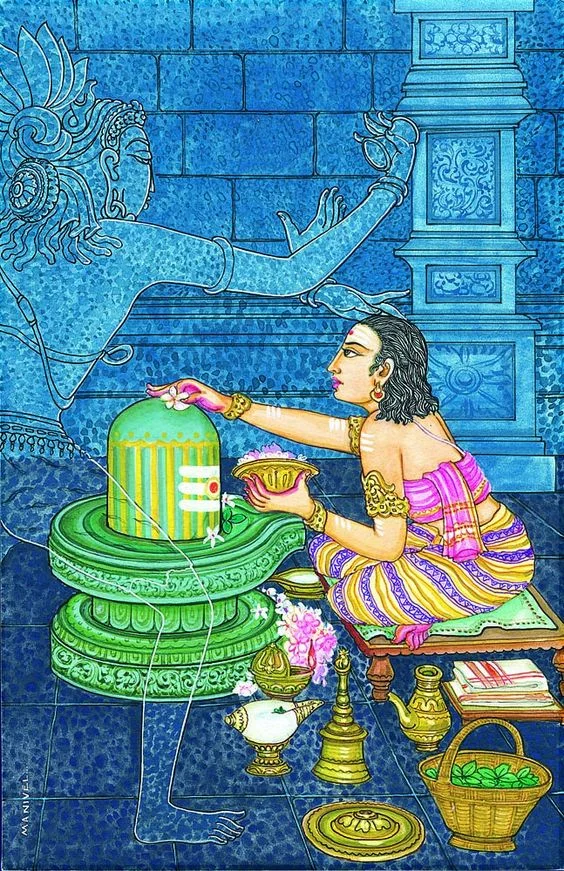
Saying this, offer flowers on the Shiva linga. In this way, the entire procedure ends. Thereafter donate to brahmins. To the best of your ability feed rich food to Shiva bhaktas and gain their blessings.
Test your Alignment with the Spiritual Subject Matter (only 7 Questions)
The scores generated in this Quiz are relative. There are no right or wrong answers. A percentage towards 100 indicates that you are more aligned to the overall subject matter.
Four Prahars of Shivaratri
First subdivision- Evening 6:00 PM to 9:00 PM
Second subdivision- Night 9:00 PM to 12:00 AM
Third subdivision- Night 12:00 PM to 3:00 AM
Fourth Subdivision- Morning 3:00AM to 6:00 AM
Brahma continues-
“Oh Narada, now I shall elaborate on the four subdivisions of time (each subdivision consisting of three hours).
First Prahar
Firstly, gather all the articles and perform Dashopachar (10 procedure) or Shodashopachara (16-procedure) puja for the Parthiv or usual Shivlinga.
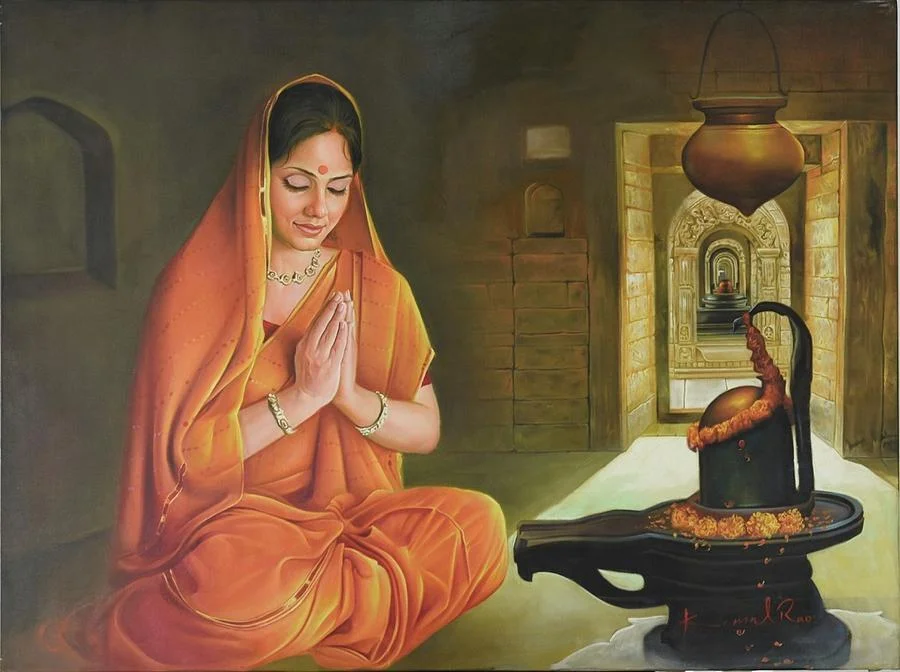
Else, simply utter the Om Namah Shivaya mantra offering Ganga water, rice, sesame, sandalwood, flowers, bilva leaves, datura, hibiscus, incense, bhoga etc.
Furthermore, do arati, offer rich food and extract of Bel leaves for the Lord. In this way, after worshipping the lord, bow down and meditate on Lord Shiva. If the devotee is devoted to some other deity, he should recite the Panchakshara mantra.
Second Prahar
“Oh Narada! Even for the second prahar follow the same procedure. However, this time, use twice the number of lotus flowers. Moreover, chant the Panchakshara mantra twice in comparison”.
Third Prahar
“Oh Narada! Do the same for the third Prahara. But this time jaggery and Madar (Giant calotrope) flowers are essential”.
Fourth Prahar
“Even in the fourth Prahar, worship Lord Shiva with the prescribed methods of Panchopachara, Dashopachar or Shodashopachara puja. During this hour, offer split black gram sweets, including many types of fruit juices”.
“Oh Narada! During all these Praharas, offer countless Bilva leaves since they are very dear to Lord Shiva. In fact, devotees should come together and celebrate the entire night.”
“Staying awake all-night is the best way to contemplate on Lord Shiva. Oh Narada, I am telling you exactly what I have heard from Sri Vishnu himself.”
Please Like the Blog and Share it for Maximum Reach

